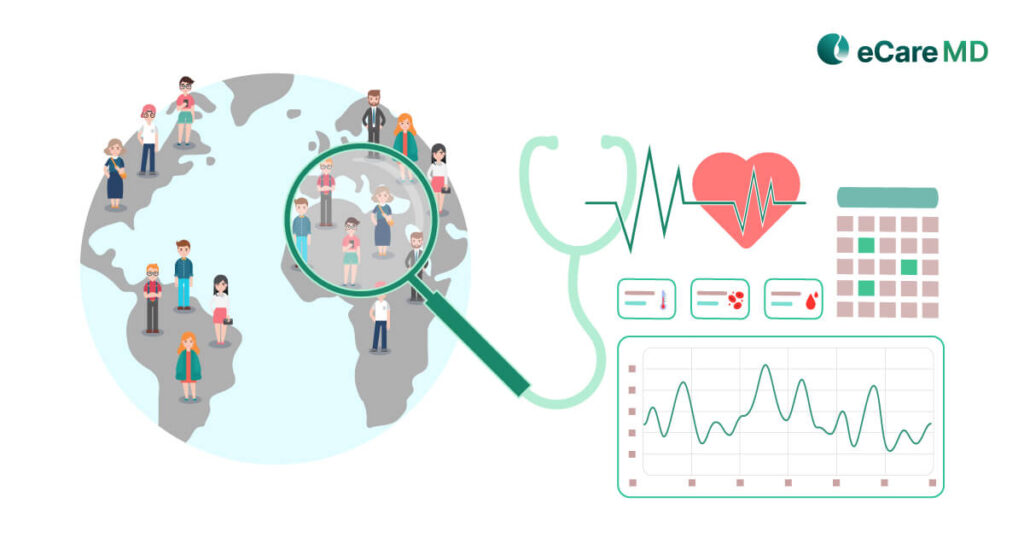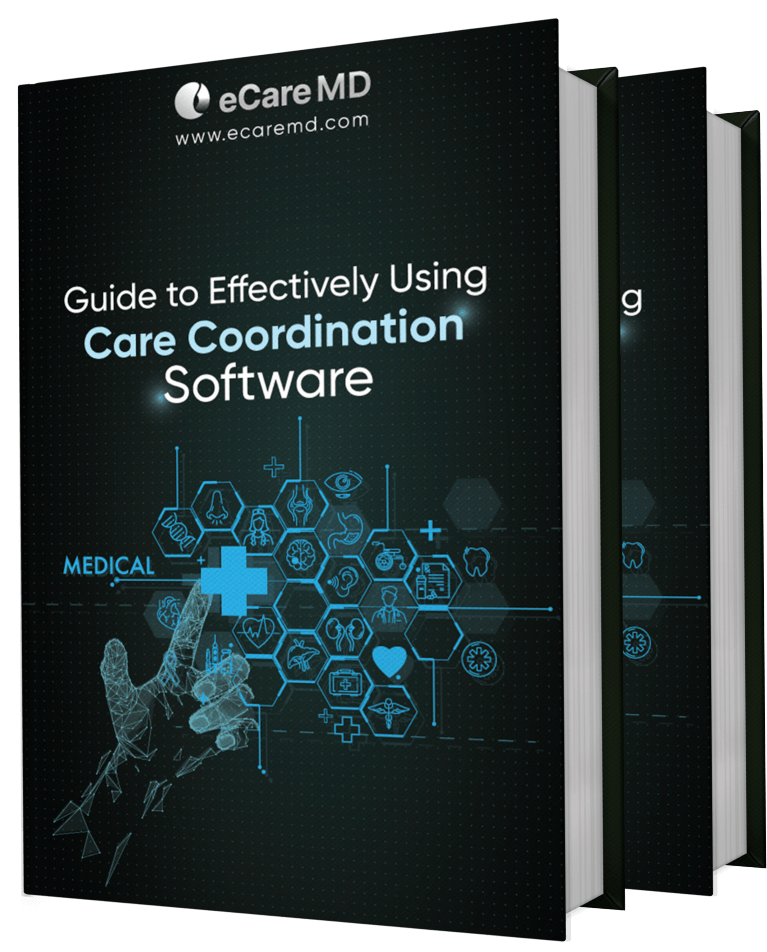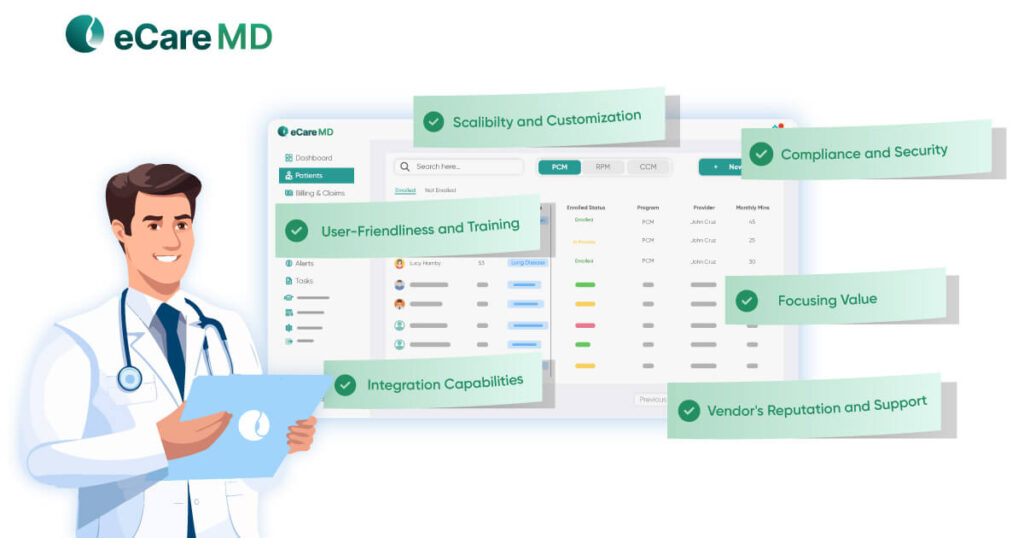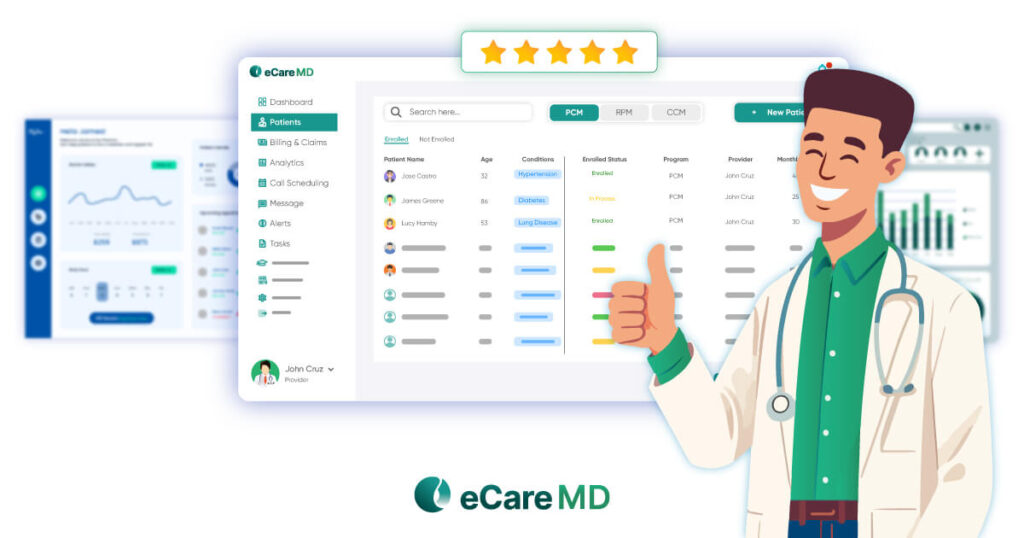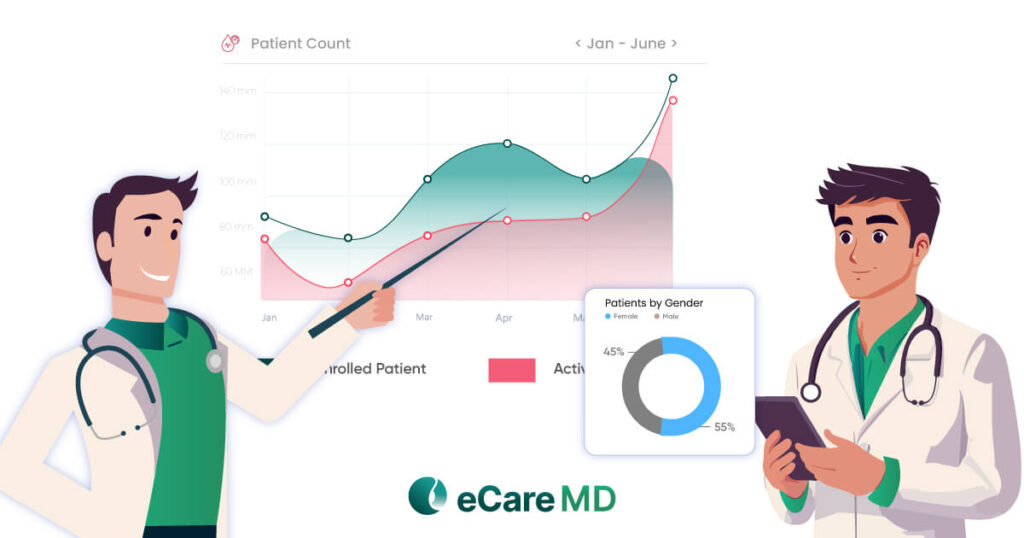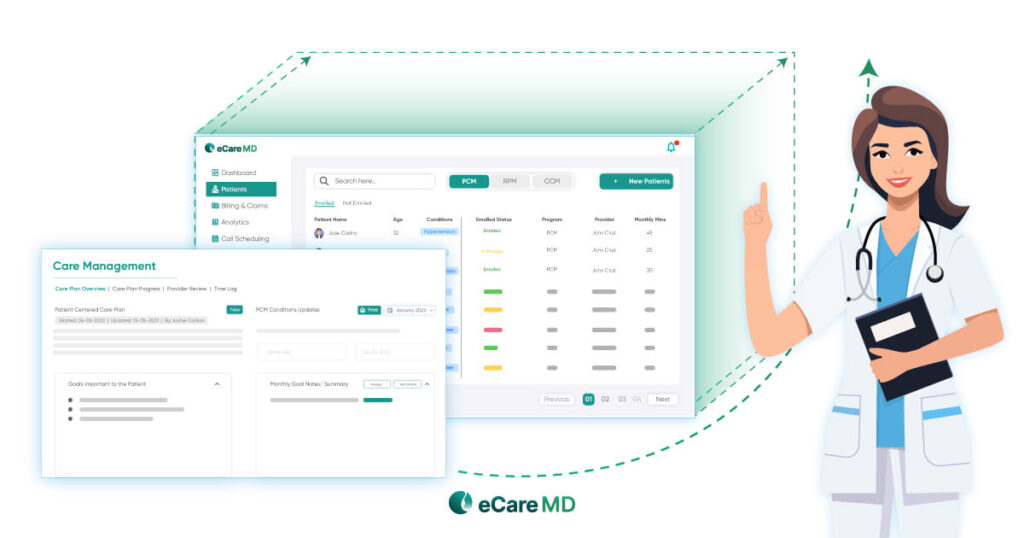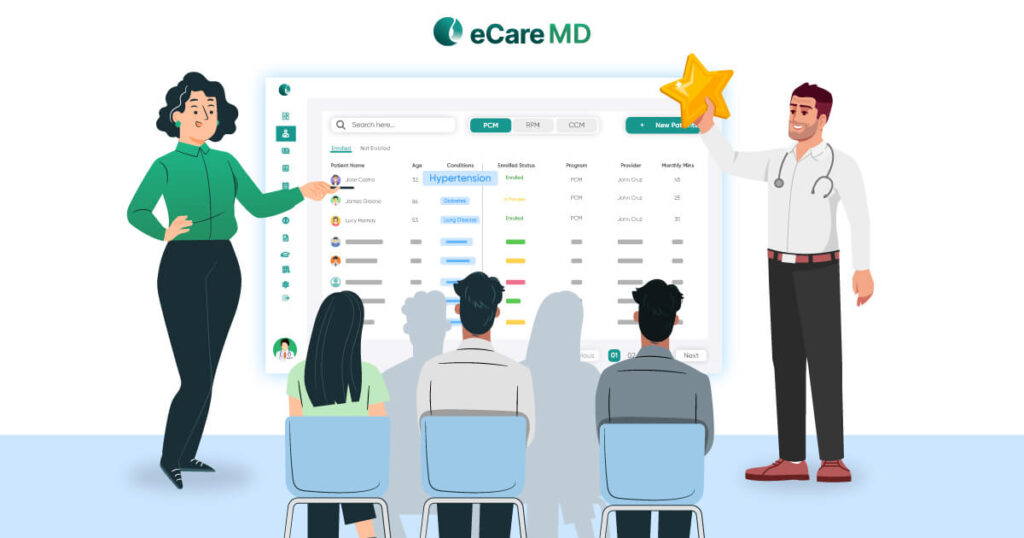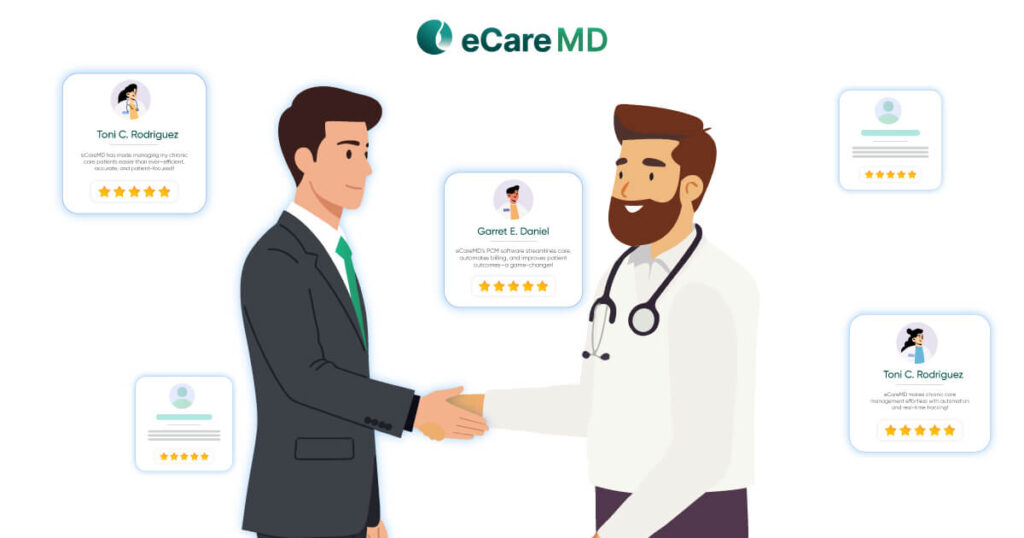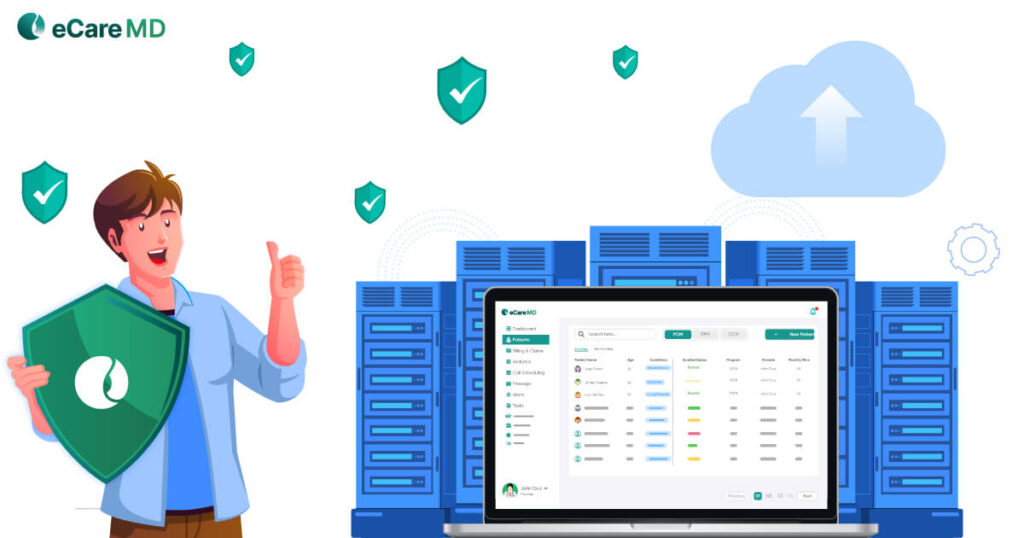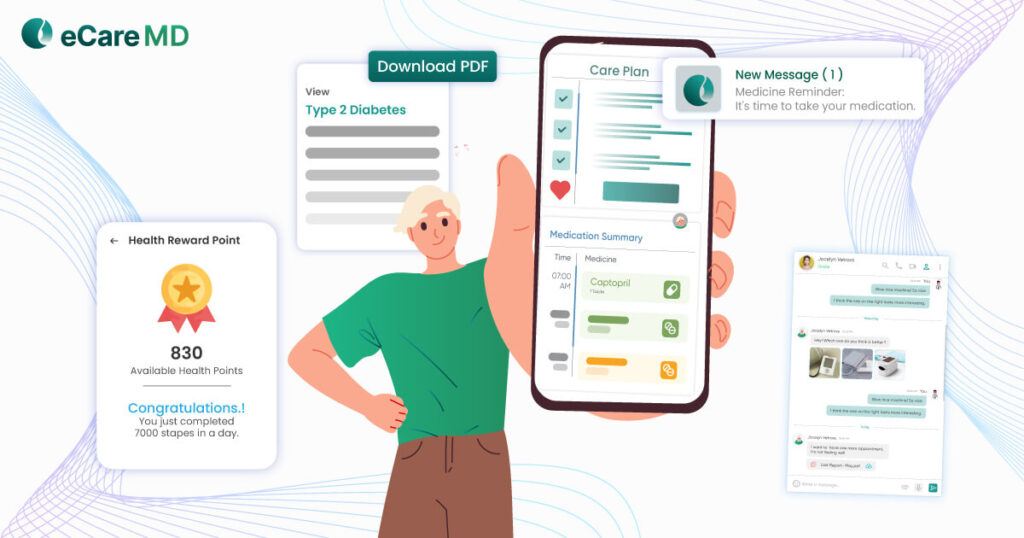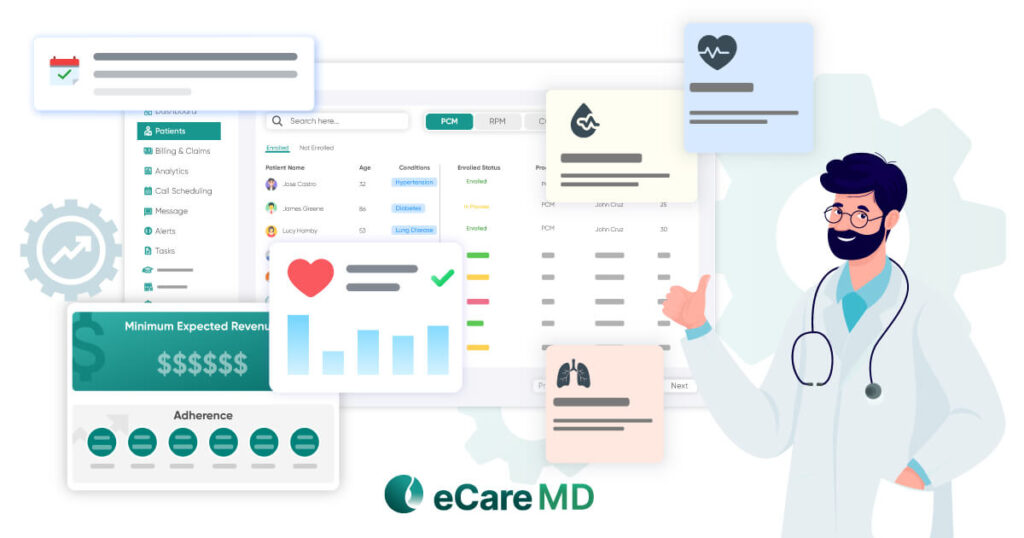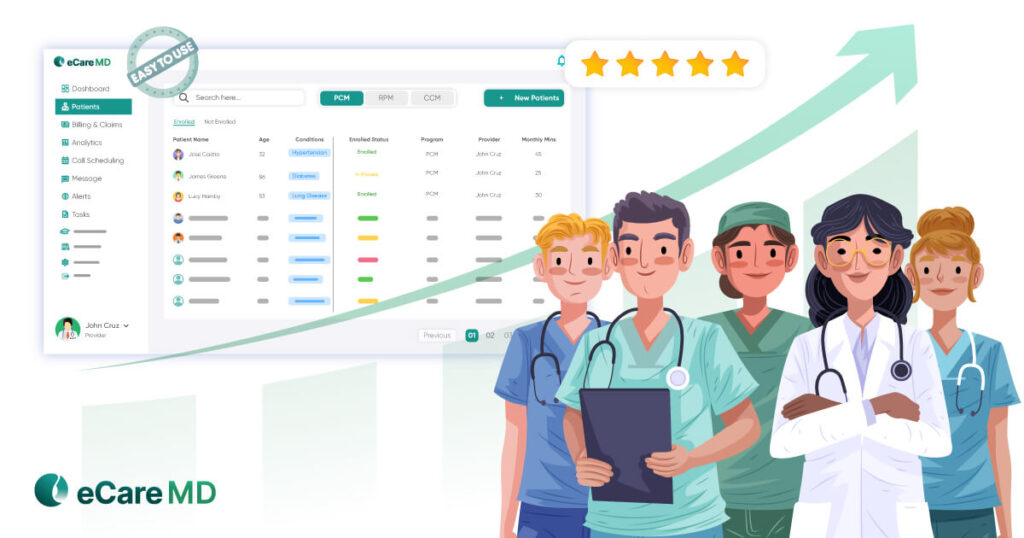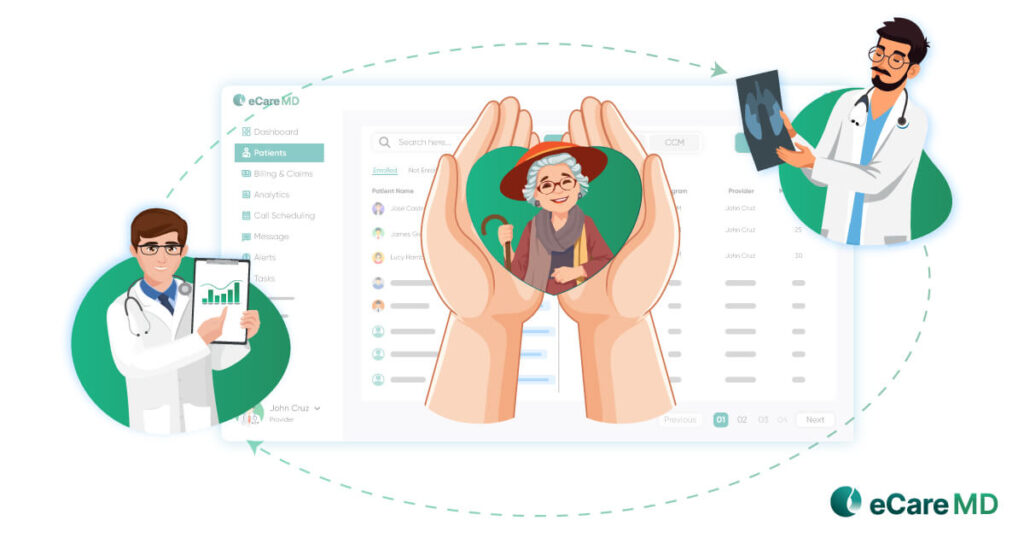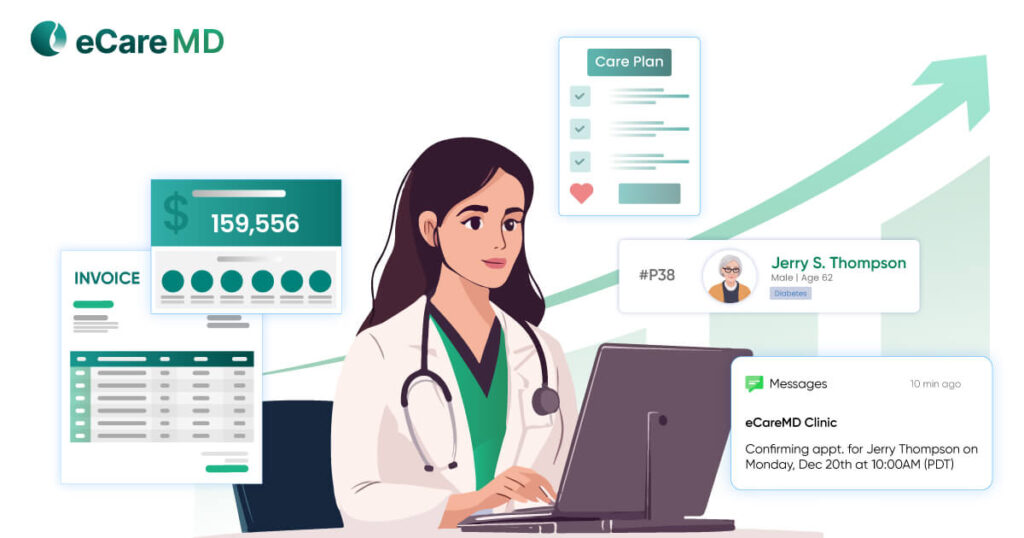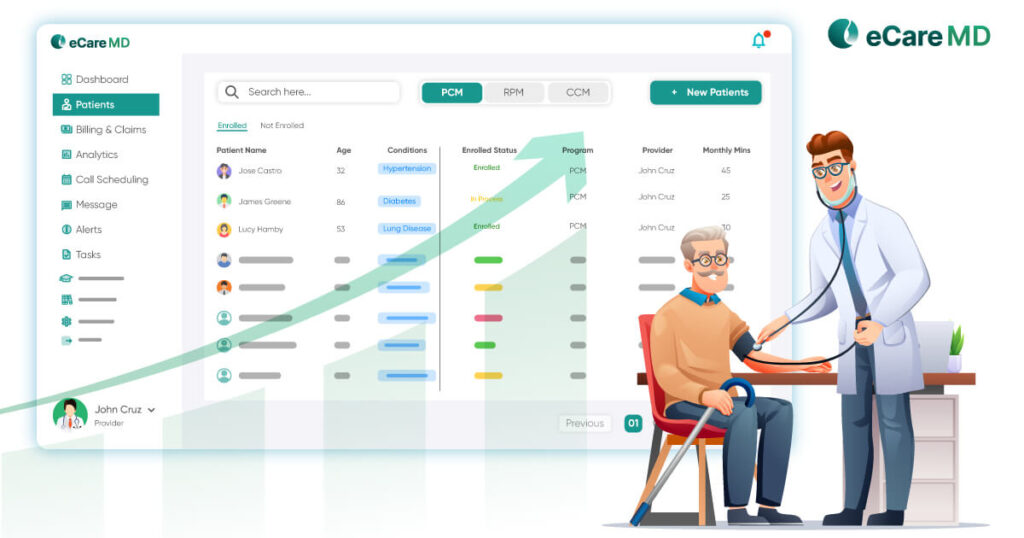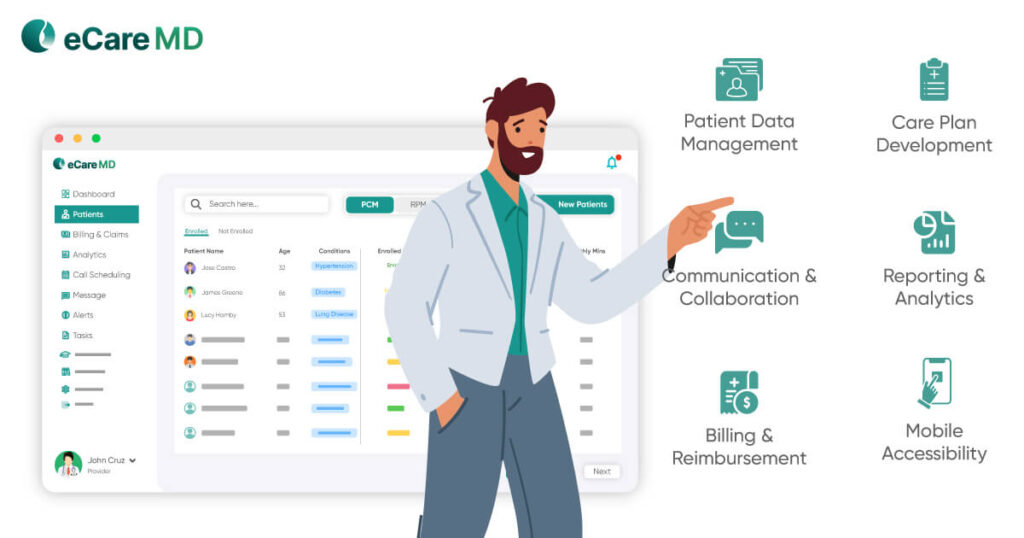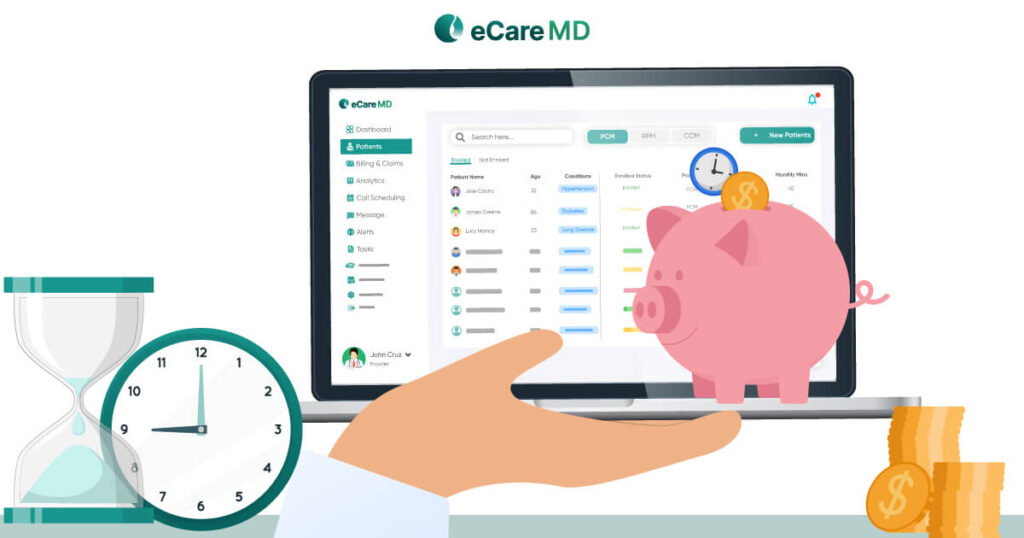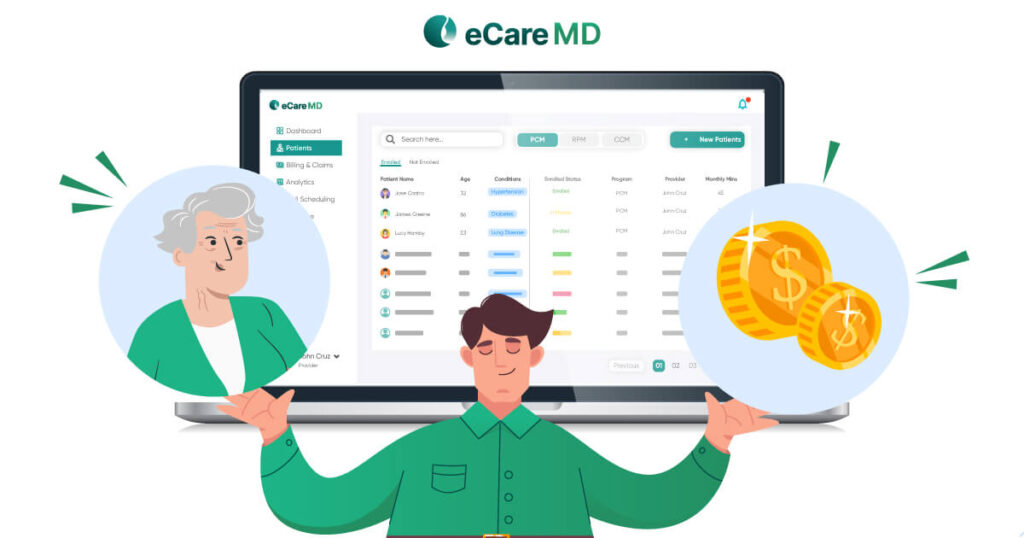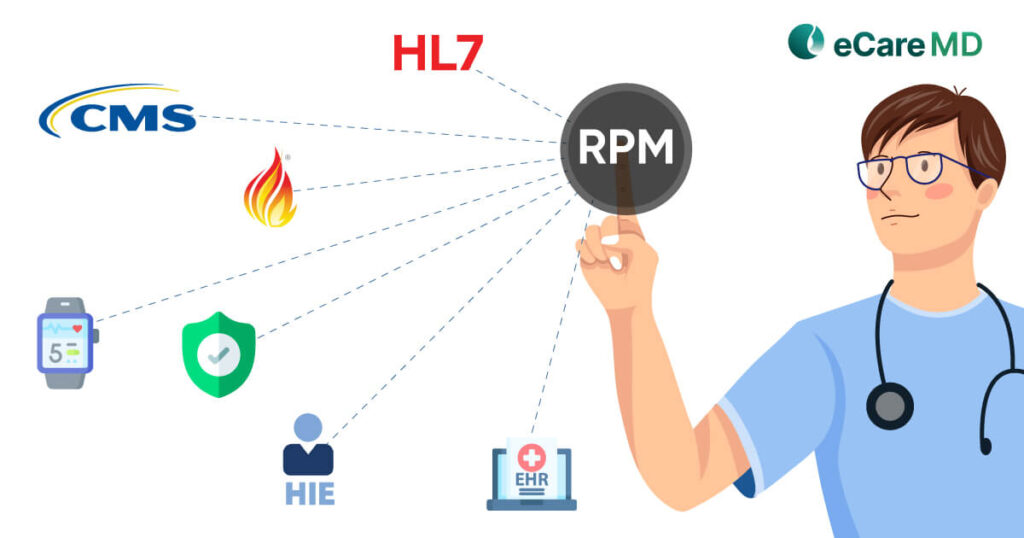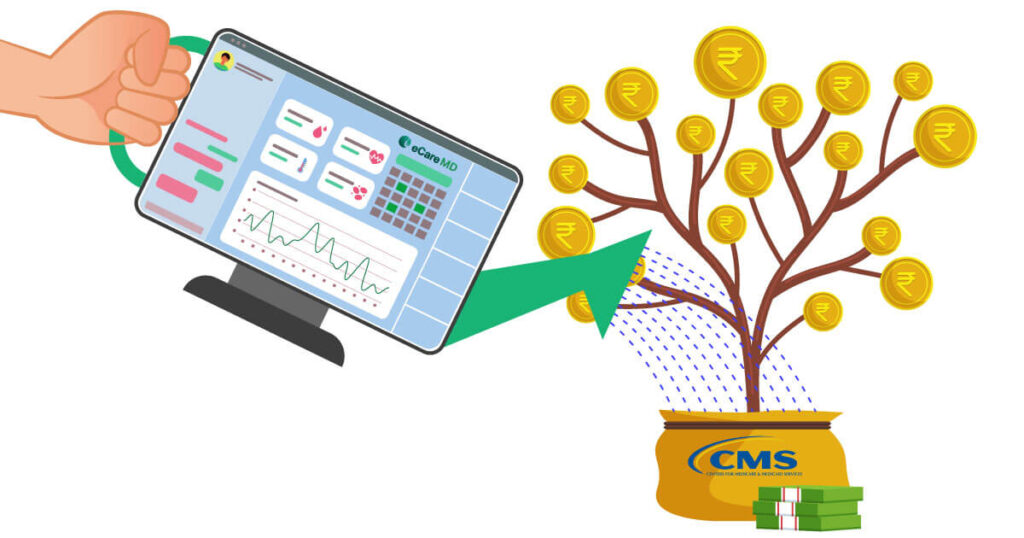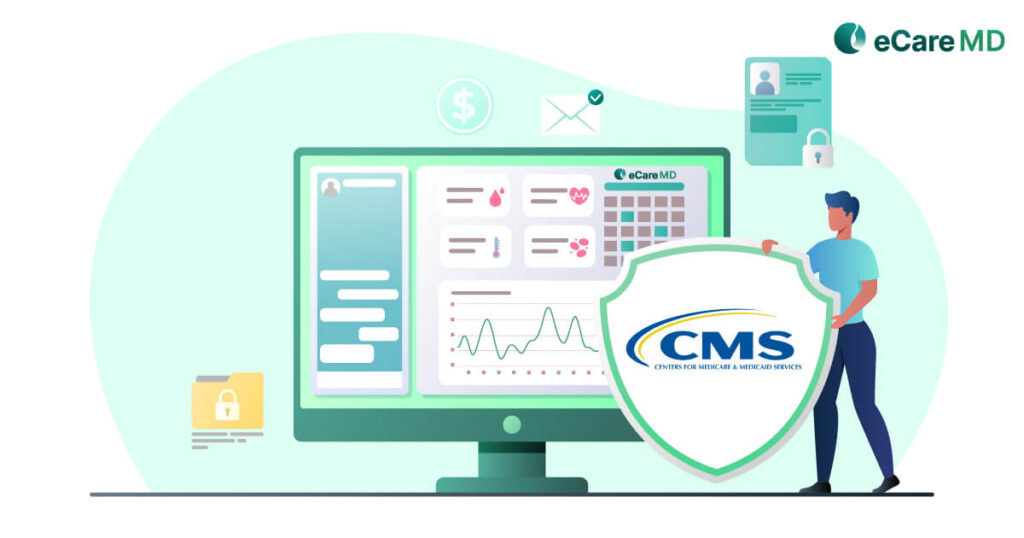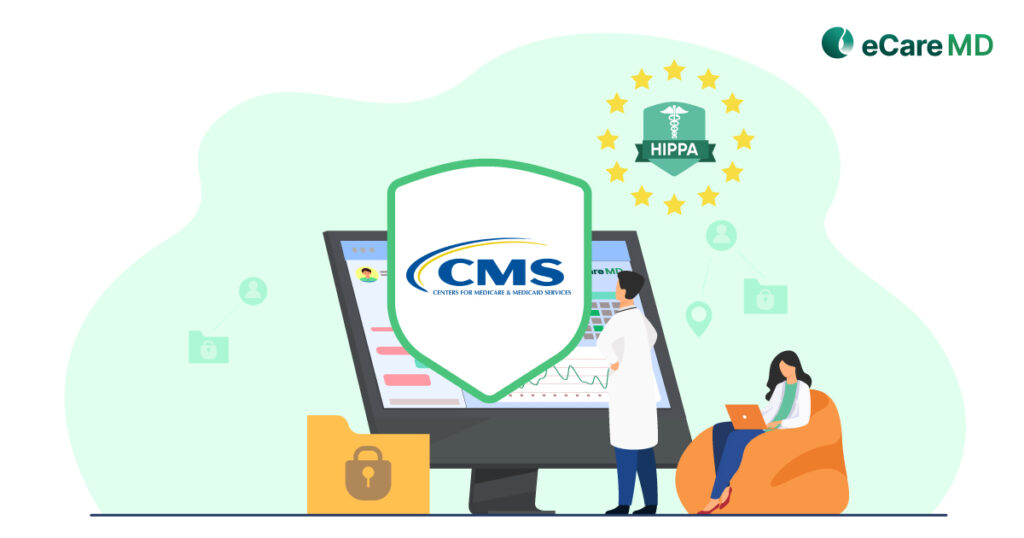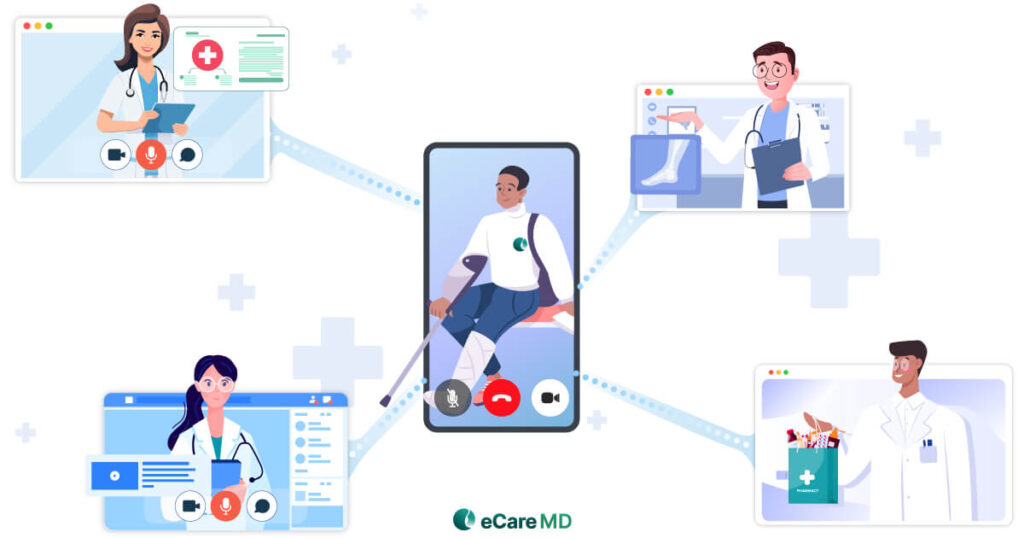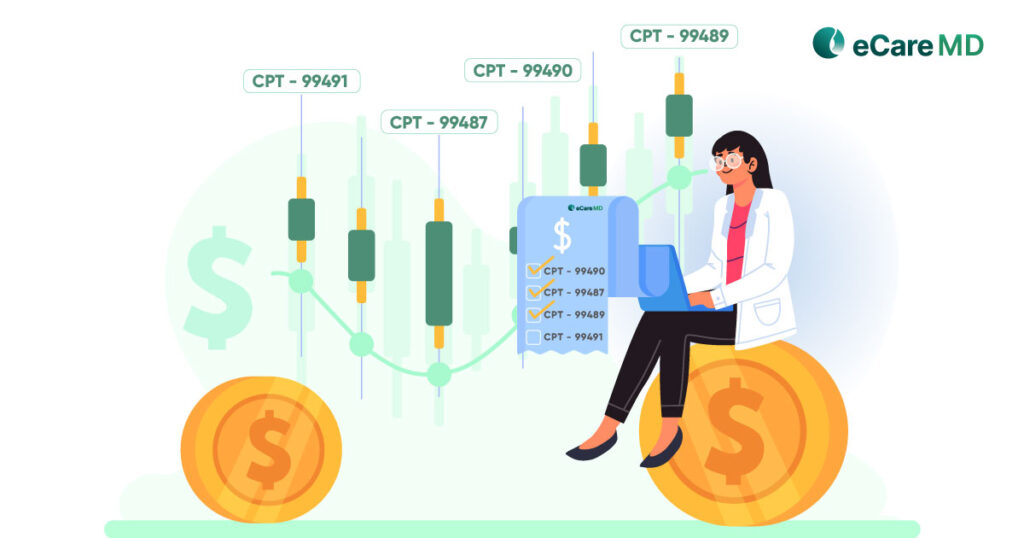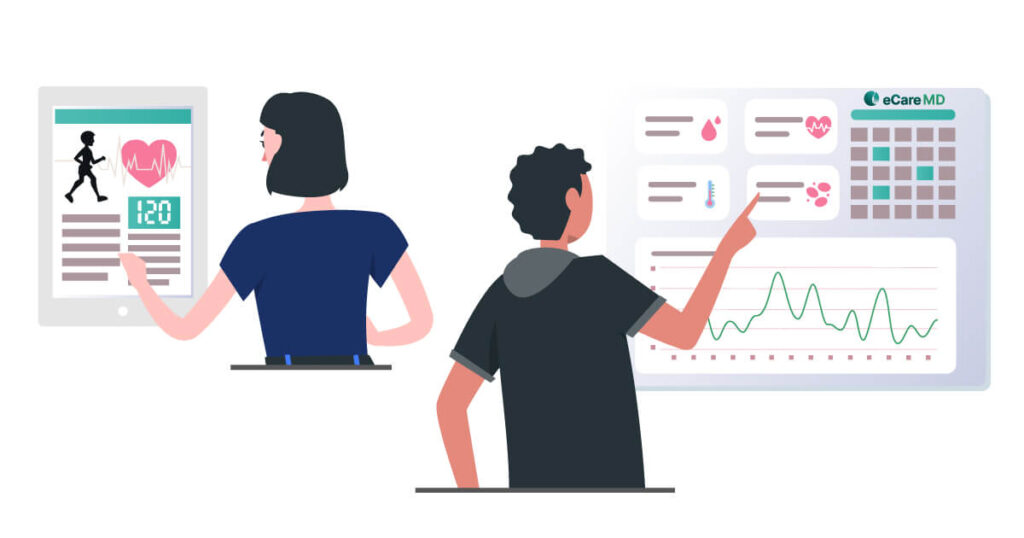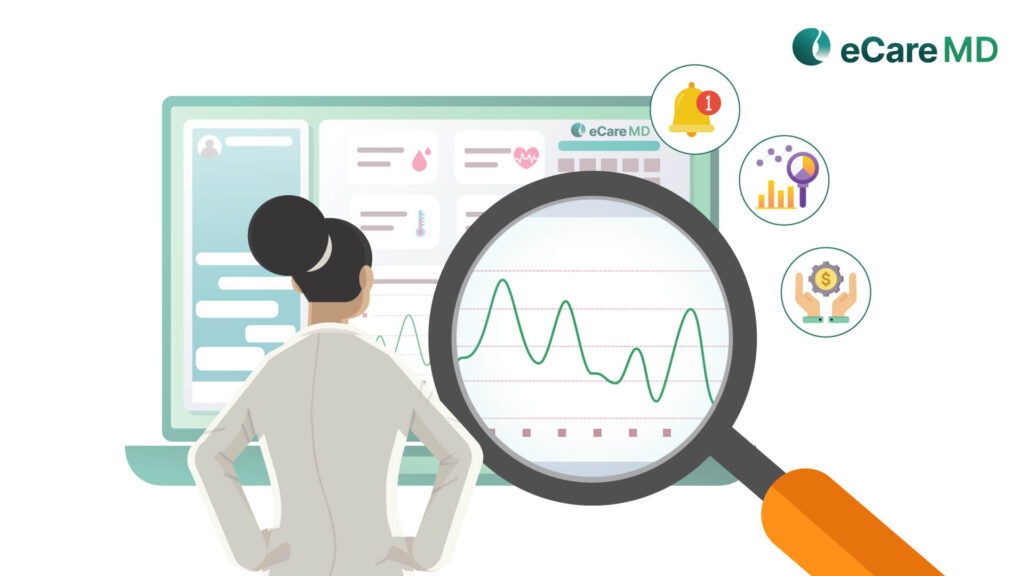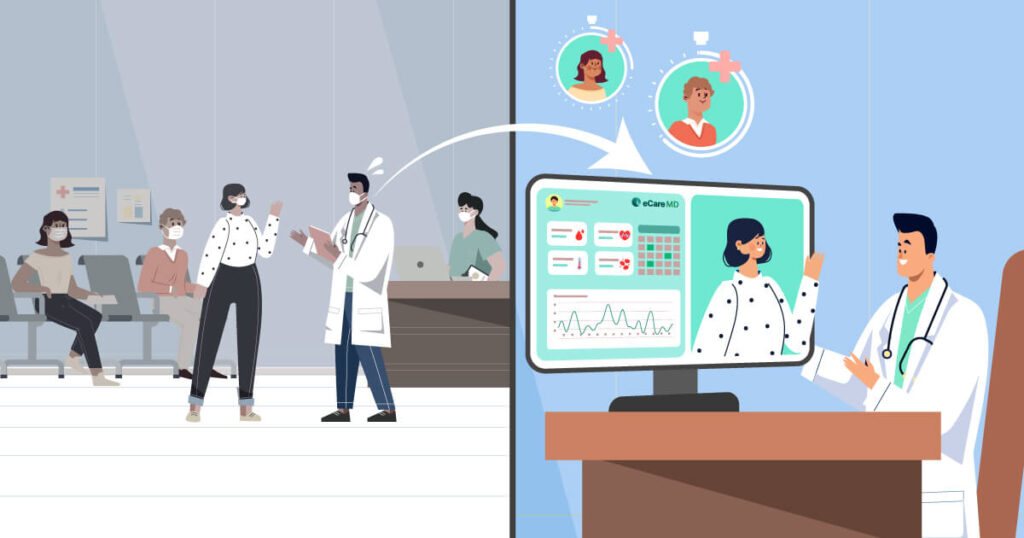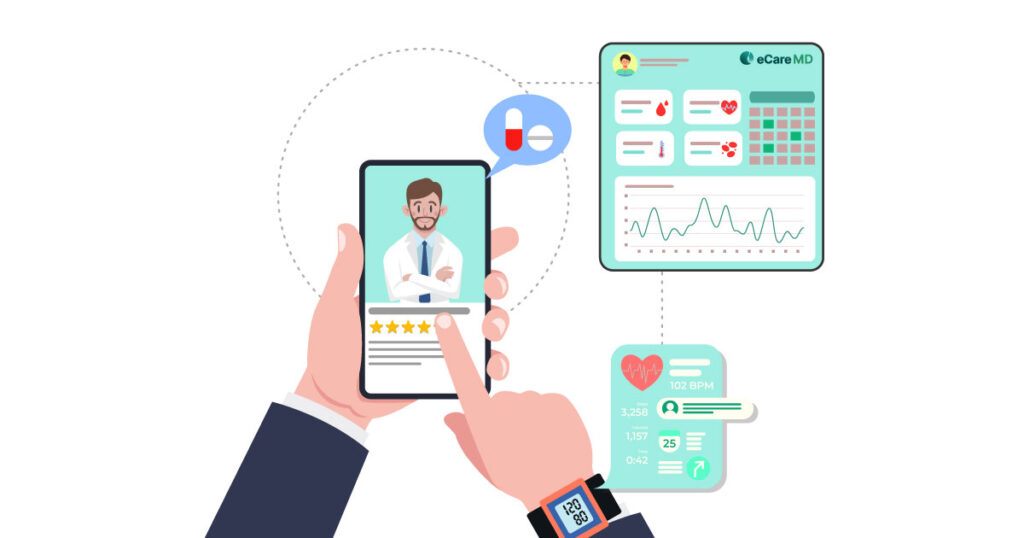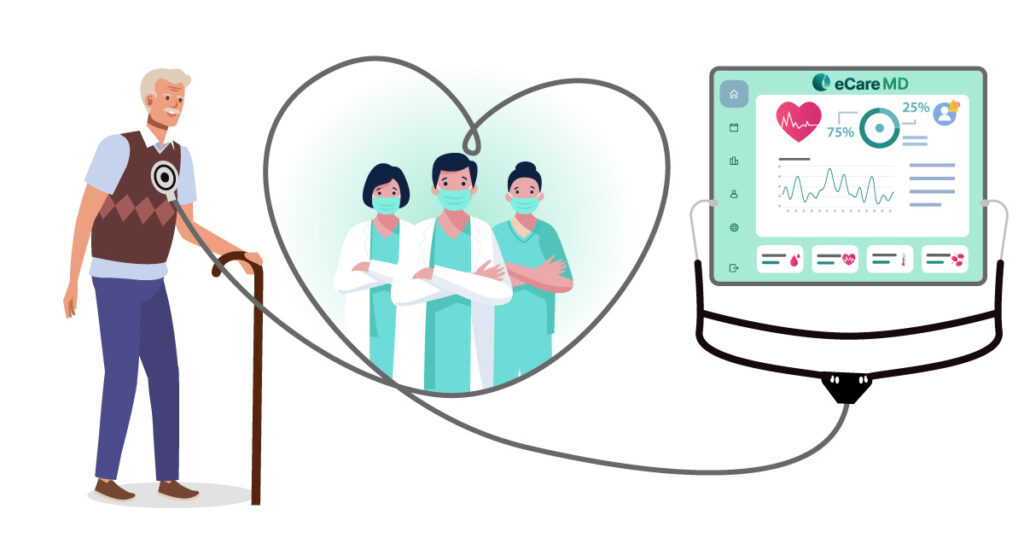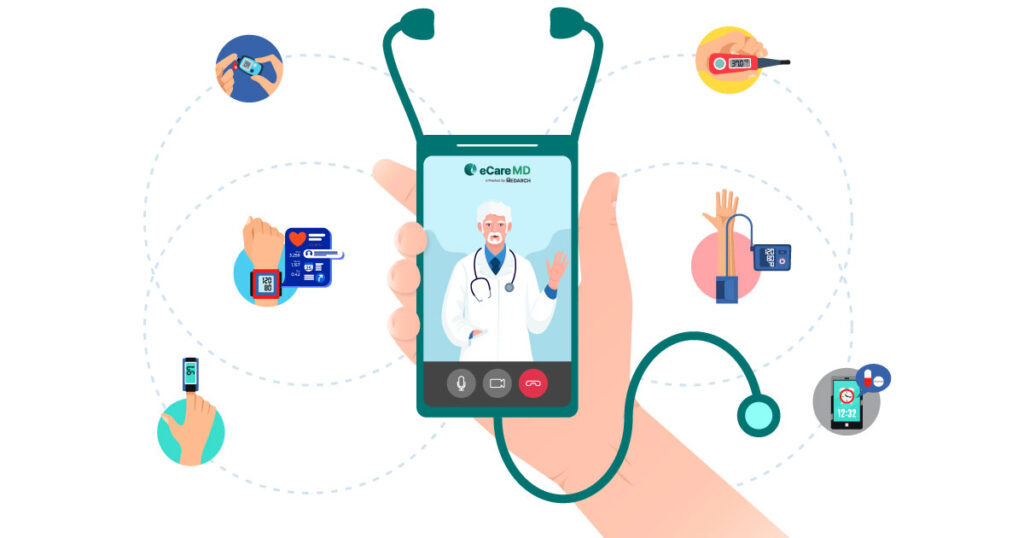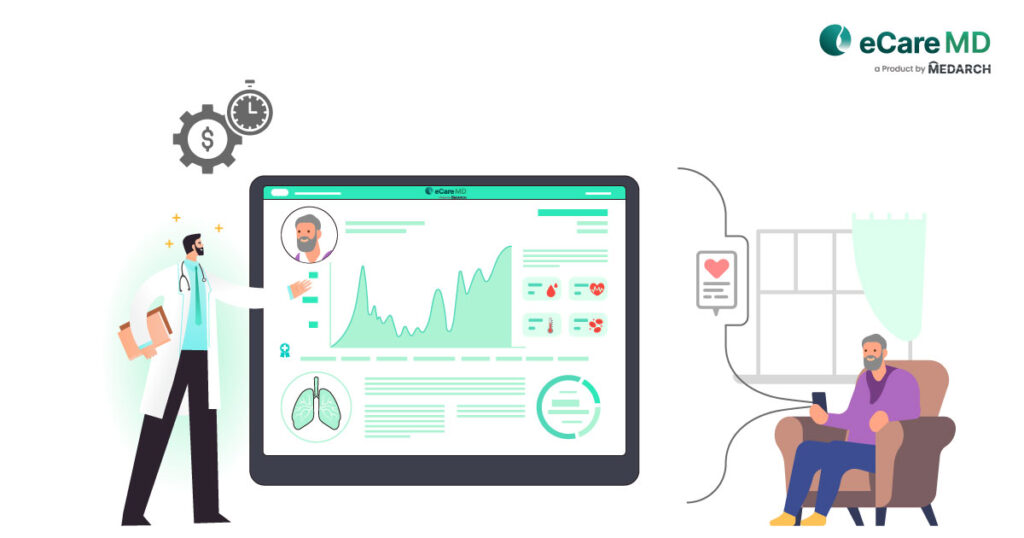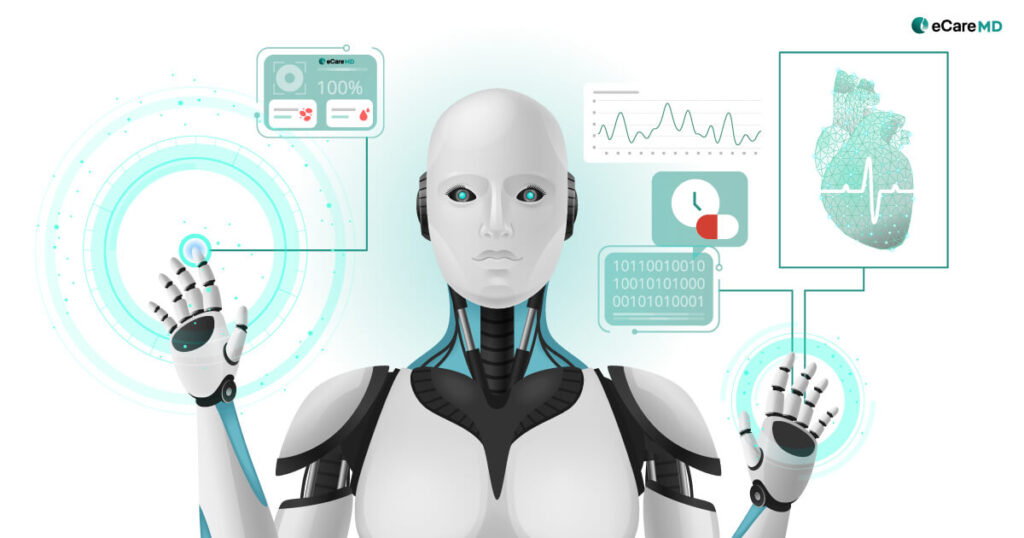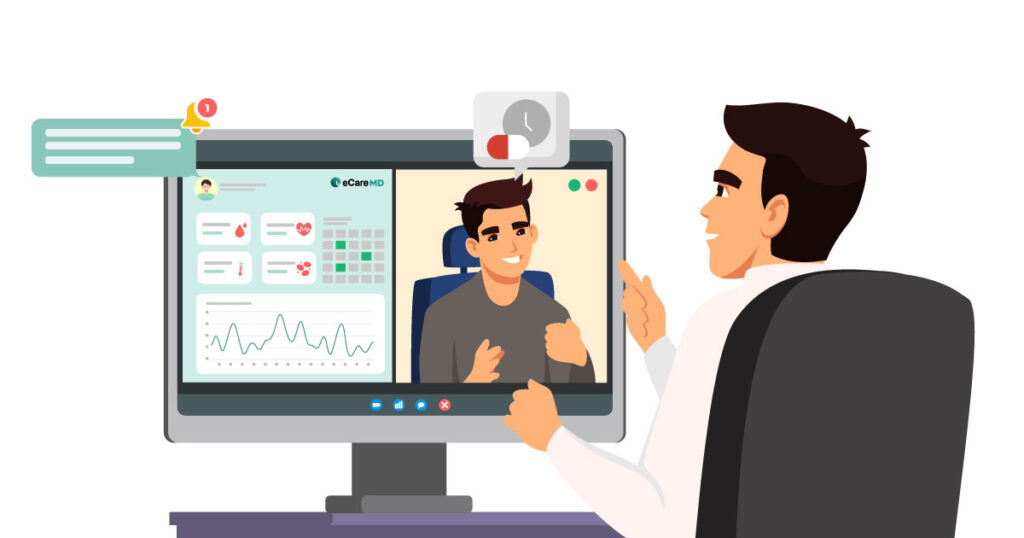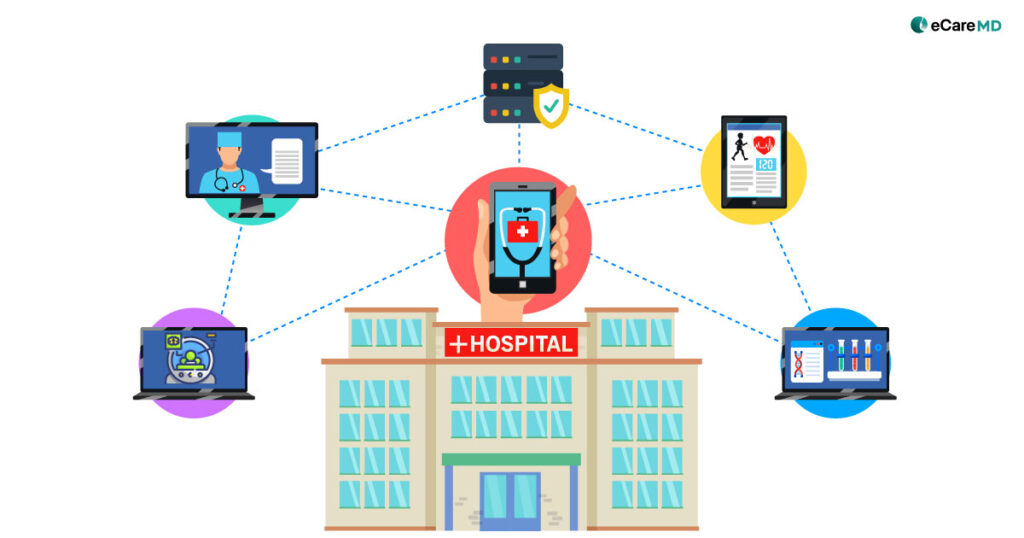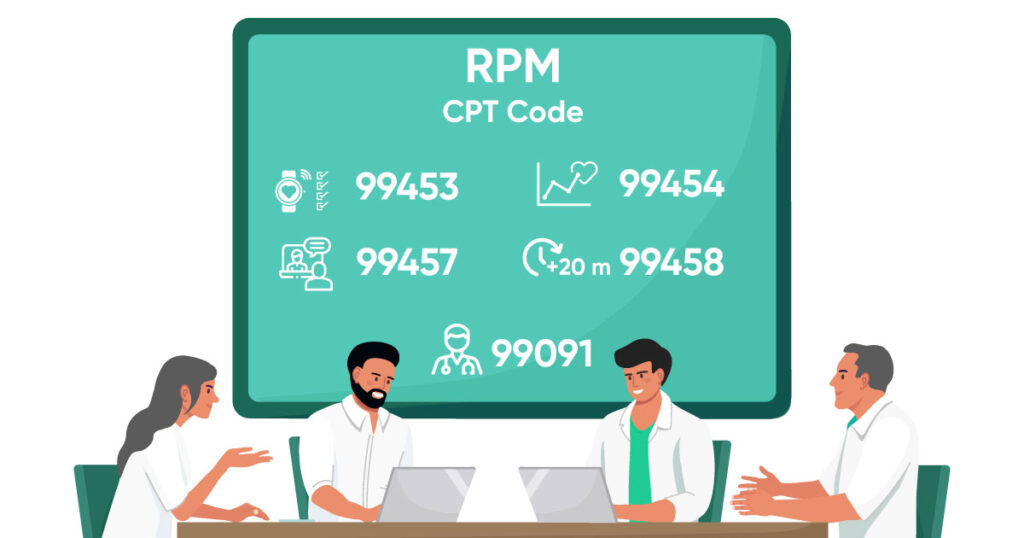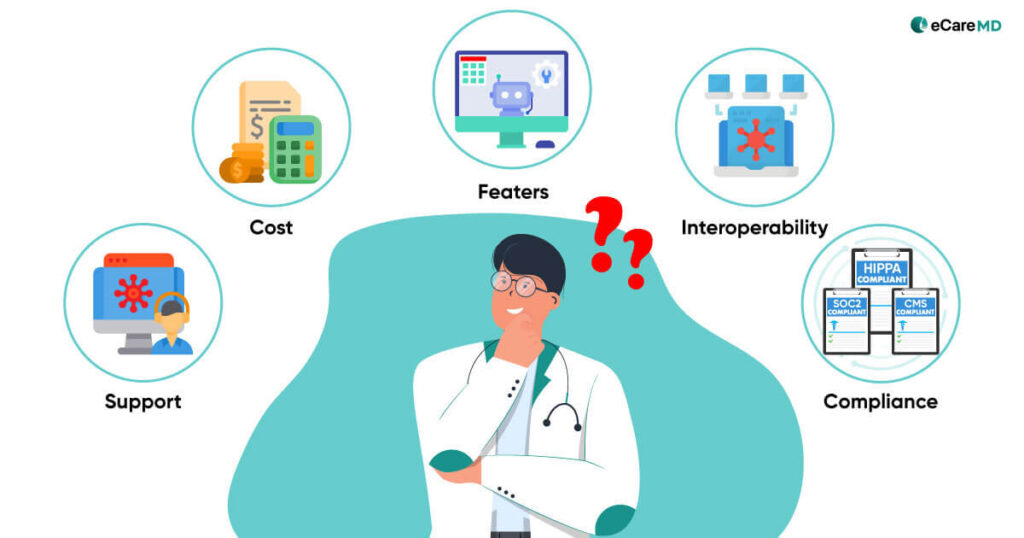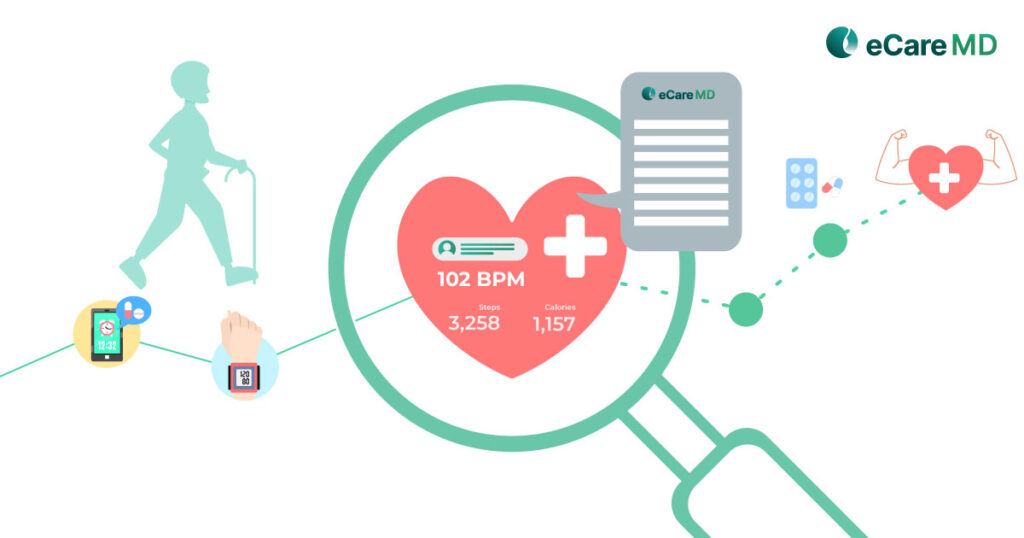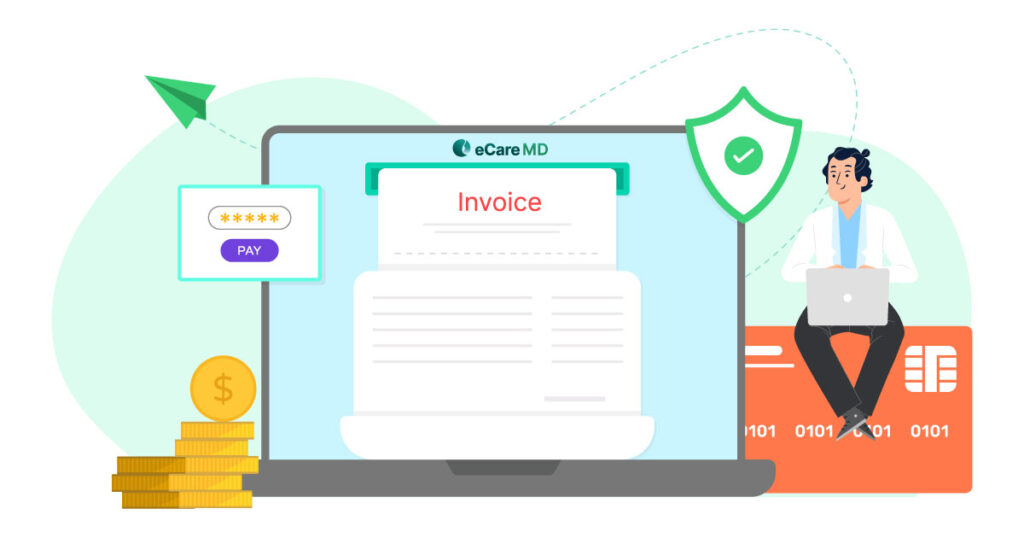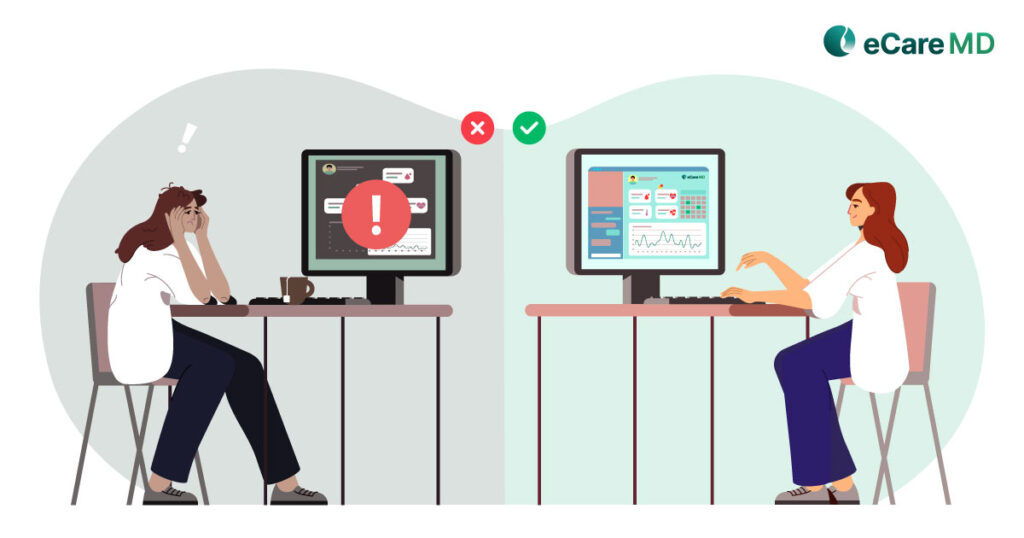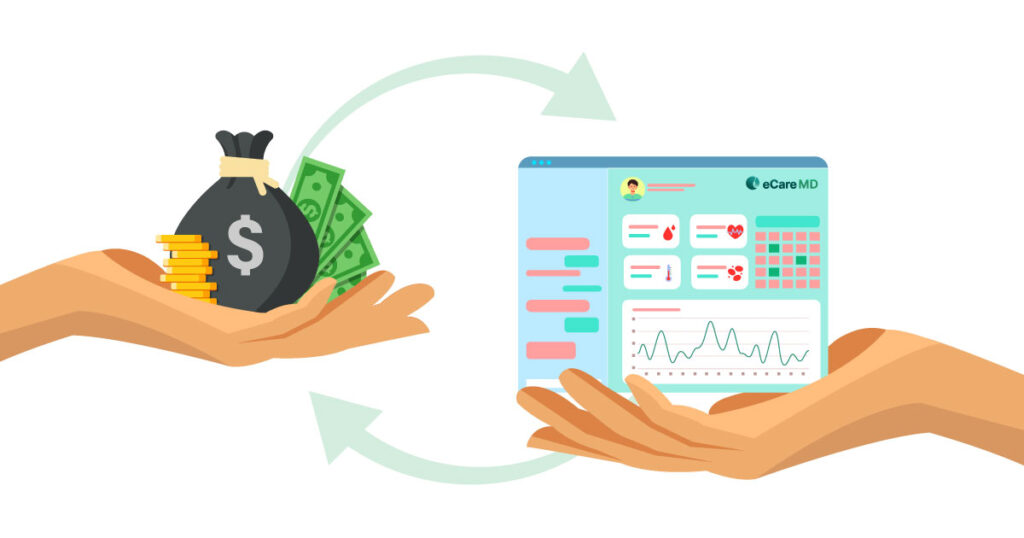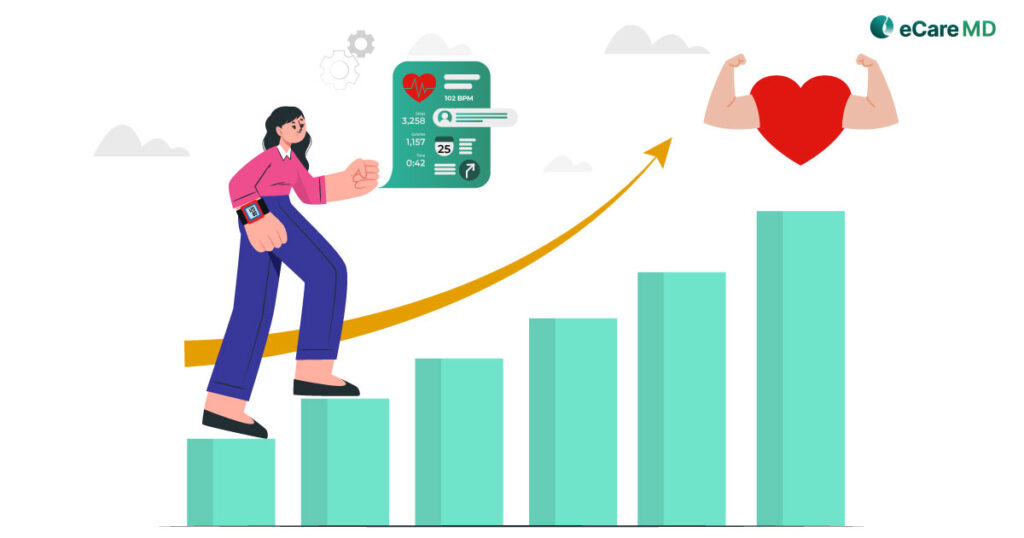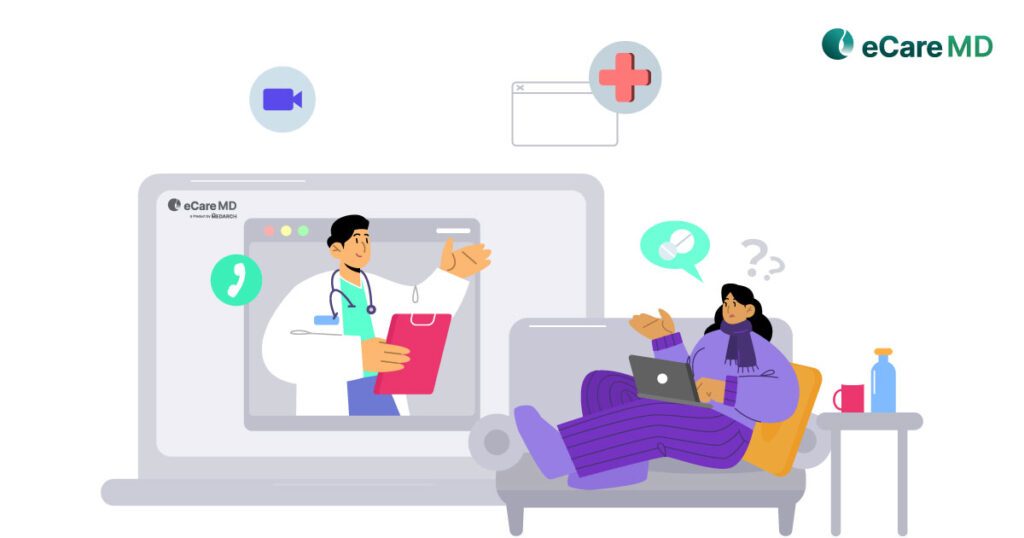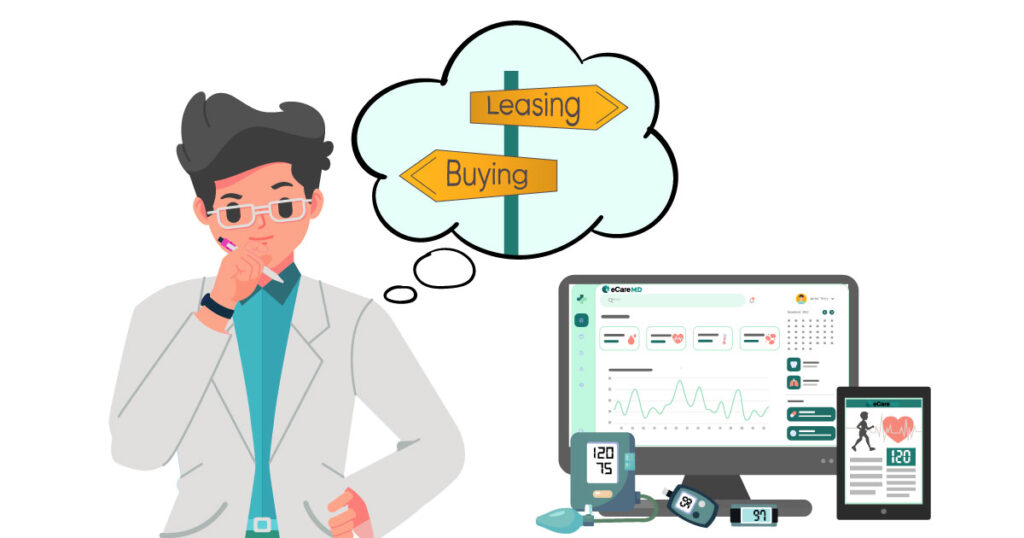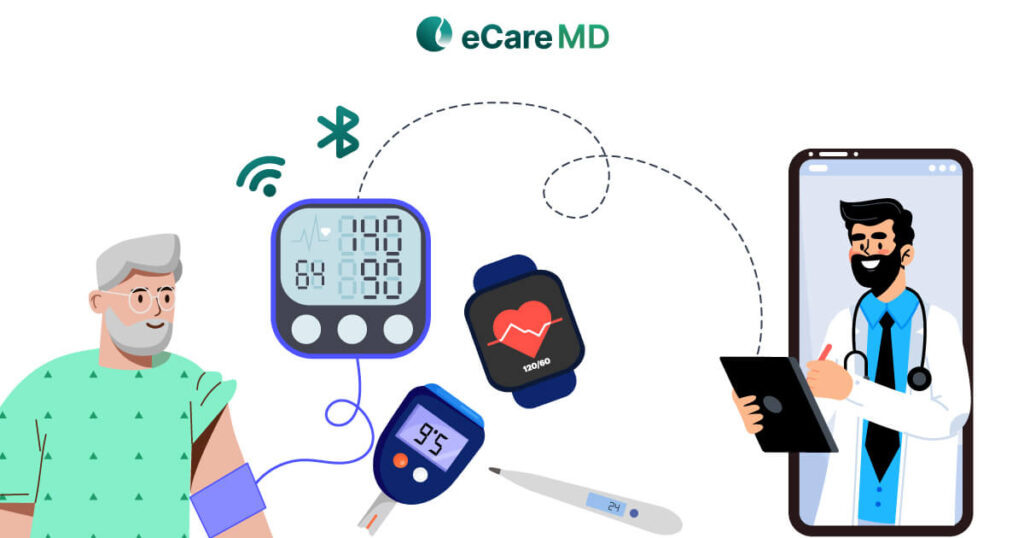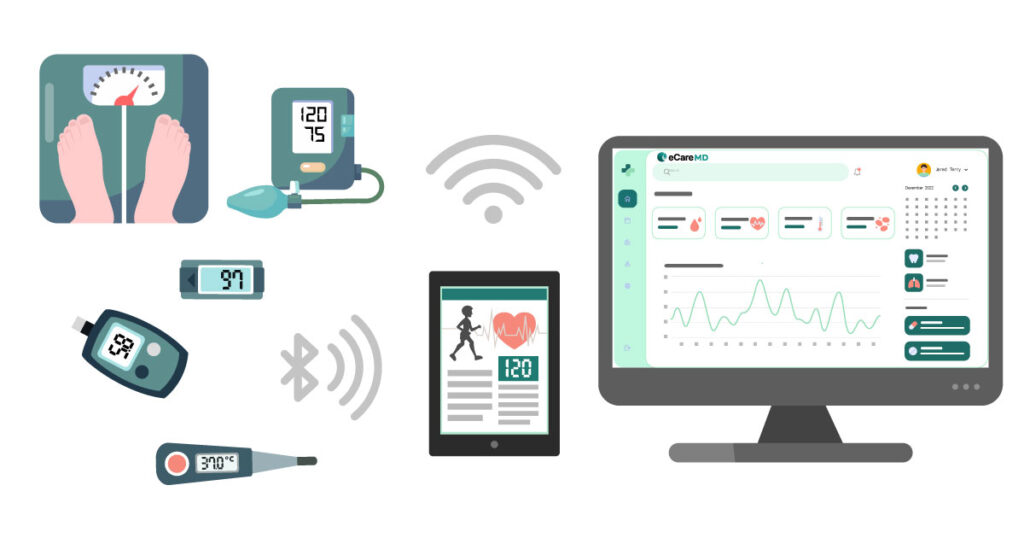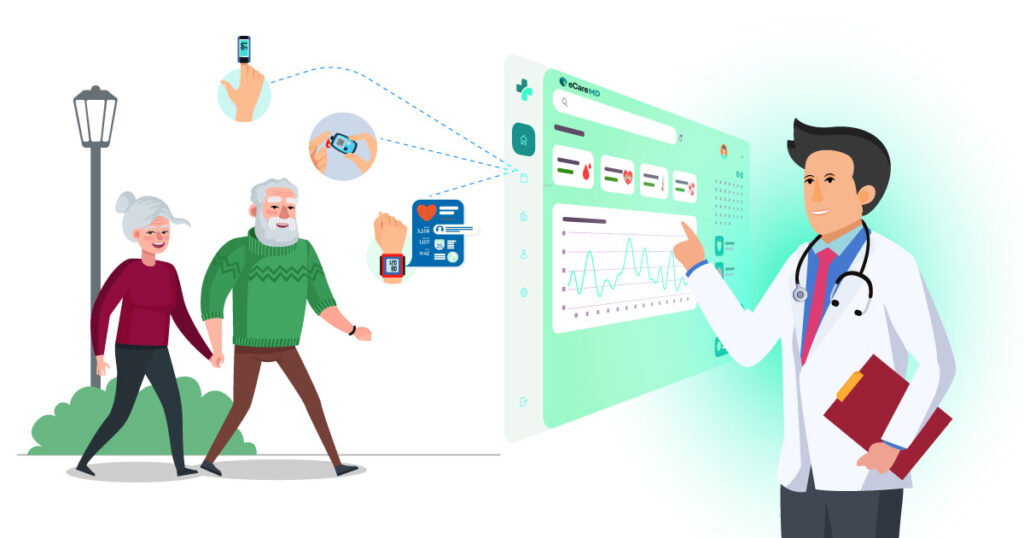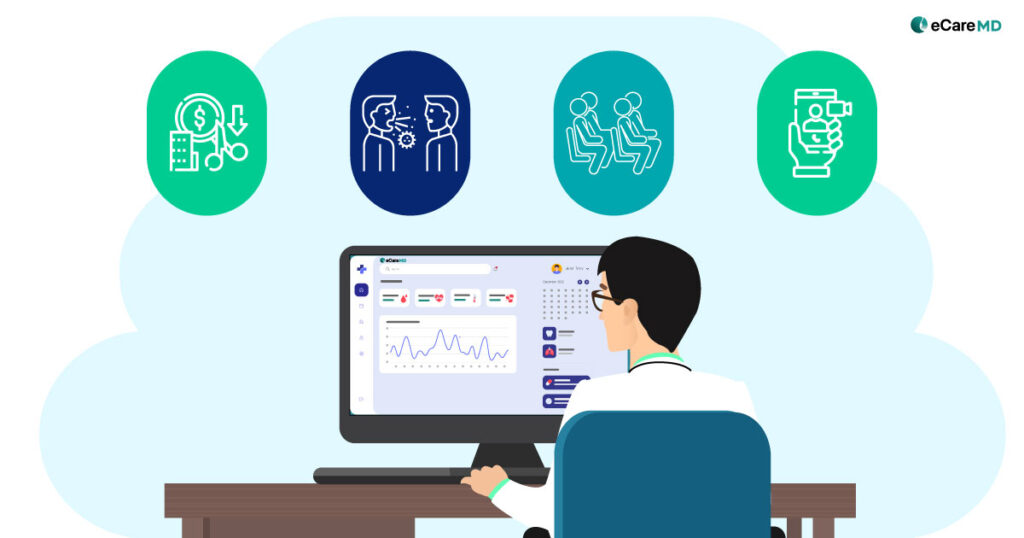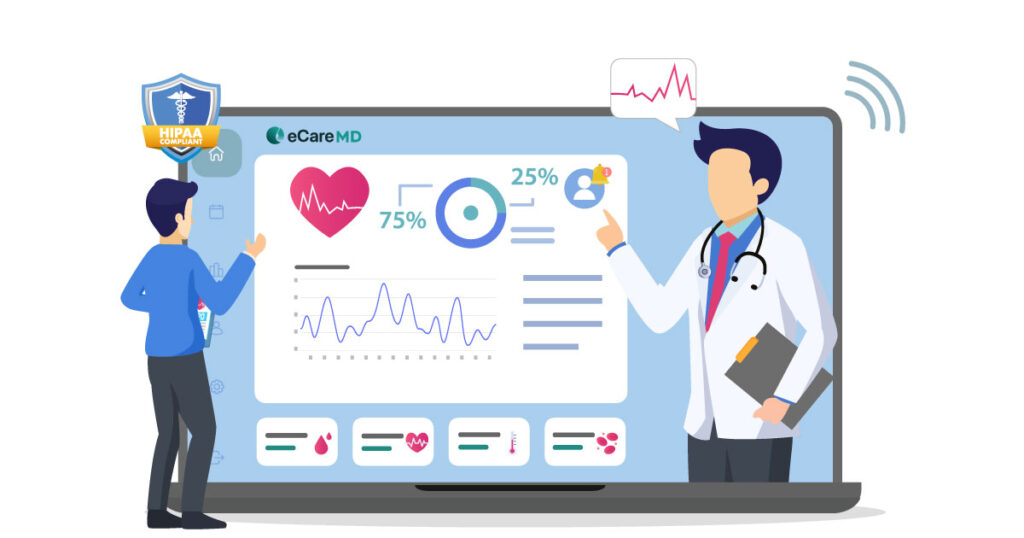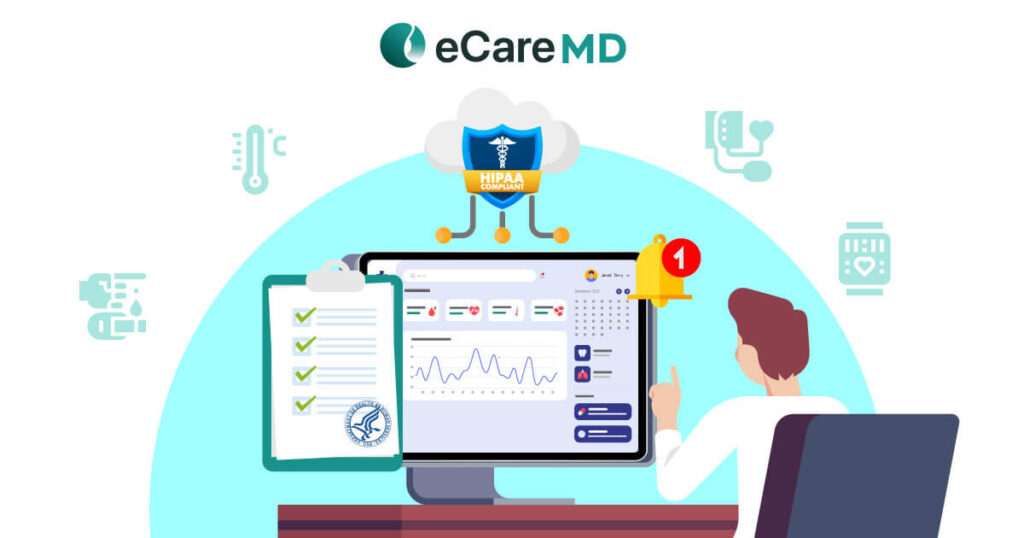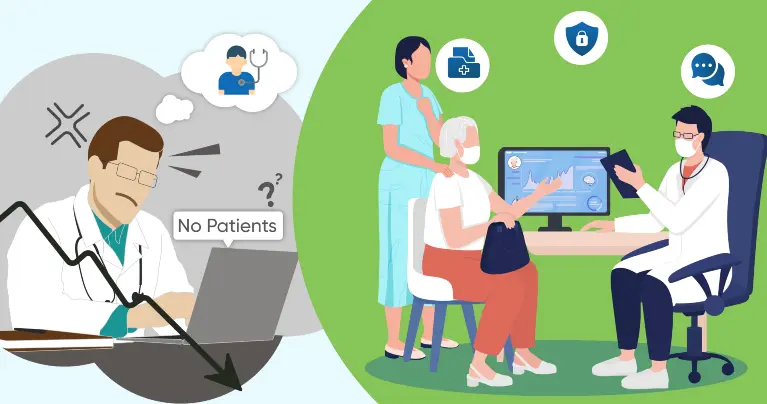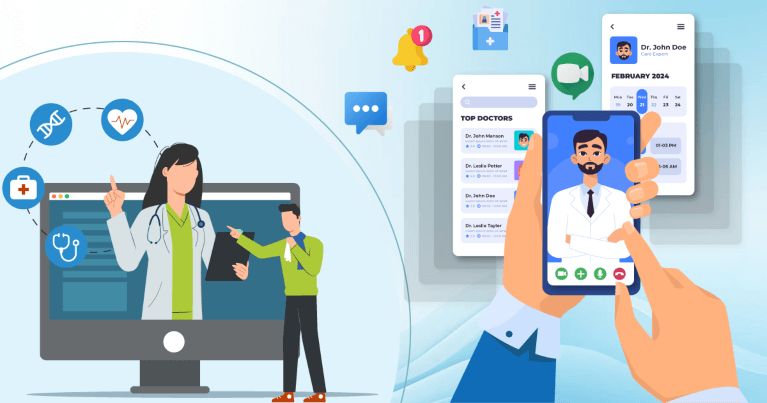‘Traditional healthcare landscape is failing!’
Understanding Population Health Management
We often see that chronically ill patients are often at a higher risk. Since CCM software is often used for effectively managing chronic conditions, it can provide instructive data to population health analytics to improve population health management and chronic disease management.
Key Benefits of Leveraging CCM Software for PHM
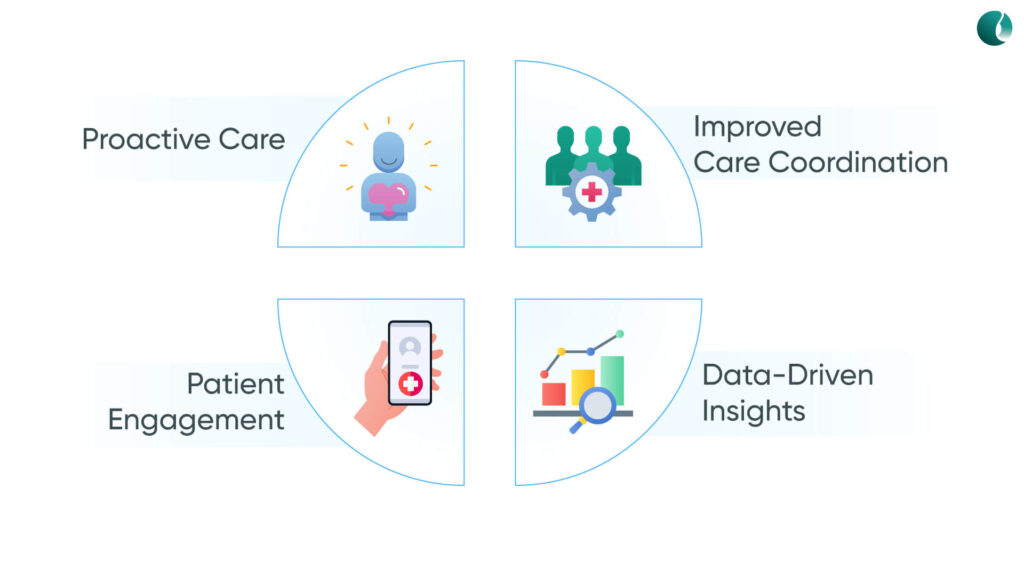
1. Proactive Care & Early Intervention
2. Improve Care Coordination & Communication
For instance, in a CCM chronic care management software, for every activity done regarding patient care, it automatically informs every member of the care team. Along with that, with features like secure messaging, care providers (and patients) can easily connect with patients and care team members to make informed decisions.
3. Enhanced Patient Engagement & Self-Management
Download Free Guide - How to Increase Patient Engagement in your CCM Software
Download now4. Data-Driven Insights & Optimized Resource Allocation
Furthermore, to measure the impact of CCM software on population health management, the resource allocation of your healthcare can be the proof.
Considerations for Implementing CCM Software
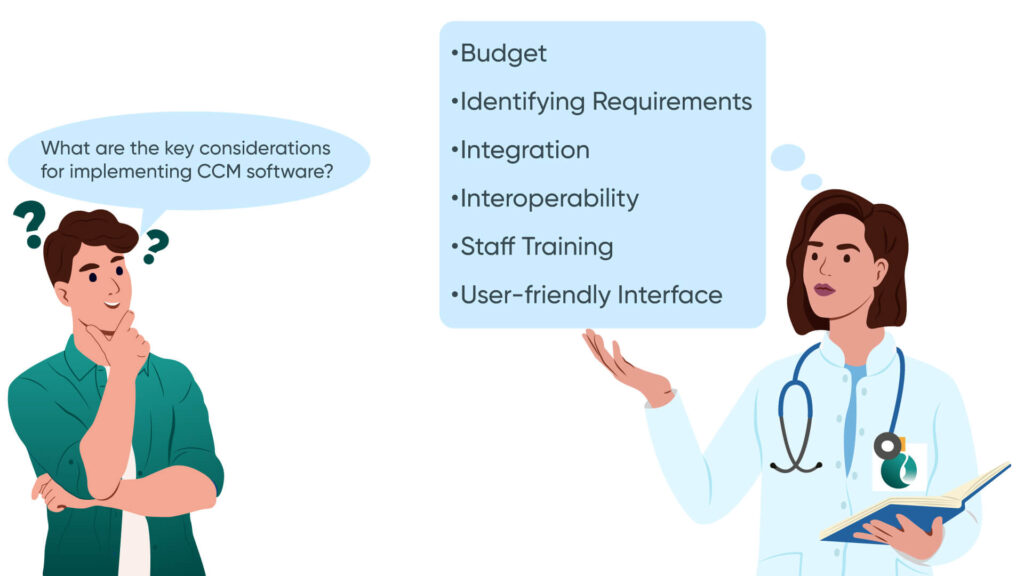
Conclusion
As healthcare practices are moving to a digital landscape, the future of population health management will clearly depend on faster adoption of care coordination management software. Since CCM software facilitates and initiates the transition of healthcare practices from reactive to proactive, it would be crucial to improve patient health outcomes.
If you’re a healthcare provider managing a higher patient population and looking to integrate population health management into your practices. In that case, a care coordination software like eCareMD might be the perfect solution for you. However, implementing CCM software requires a strategic investment in a carefully curated plan to improve population health outcomes and optimize costs.
Click here to book a free consultation call with us, and let’s revolutionize healthcare together.
Top 5 Ways CCM Software Can Boost Your Population Health Strategy
Frequently Asked Question’s
Here are some of the key benefits of using CCM software in population health management:
- Proactive care
- Enhanced self-management
- Reduced hospitalizations
- Better Care team collaboration
- Care plan management
- Population health insights
CCM software can play a vital role in addressing SDoH by offering several functionalities in population health management:
- Identifying patients at risk
- Risk stratification
- Connecting patients with resources
- Promoting patient engagement and self-management
- Data collection and analysis
While implementing population health initiatives, challenges like data fragmentation, interoperability, patient identification, coordination, communication, and patient adherence. However, CCM software can help in overcoming them by:
- Data integration and analytics
- Risk stratification and patient identification
- Care plan management and communication
- Patient engagement tools
- Reporting and cost-effectiveness analysis

